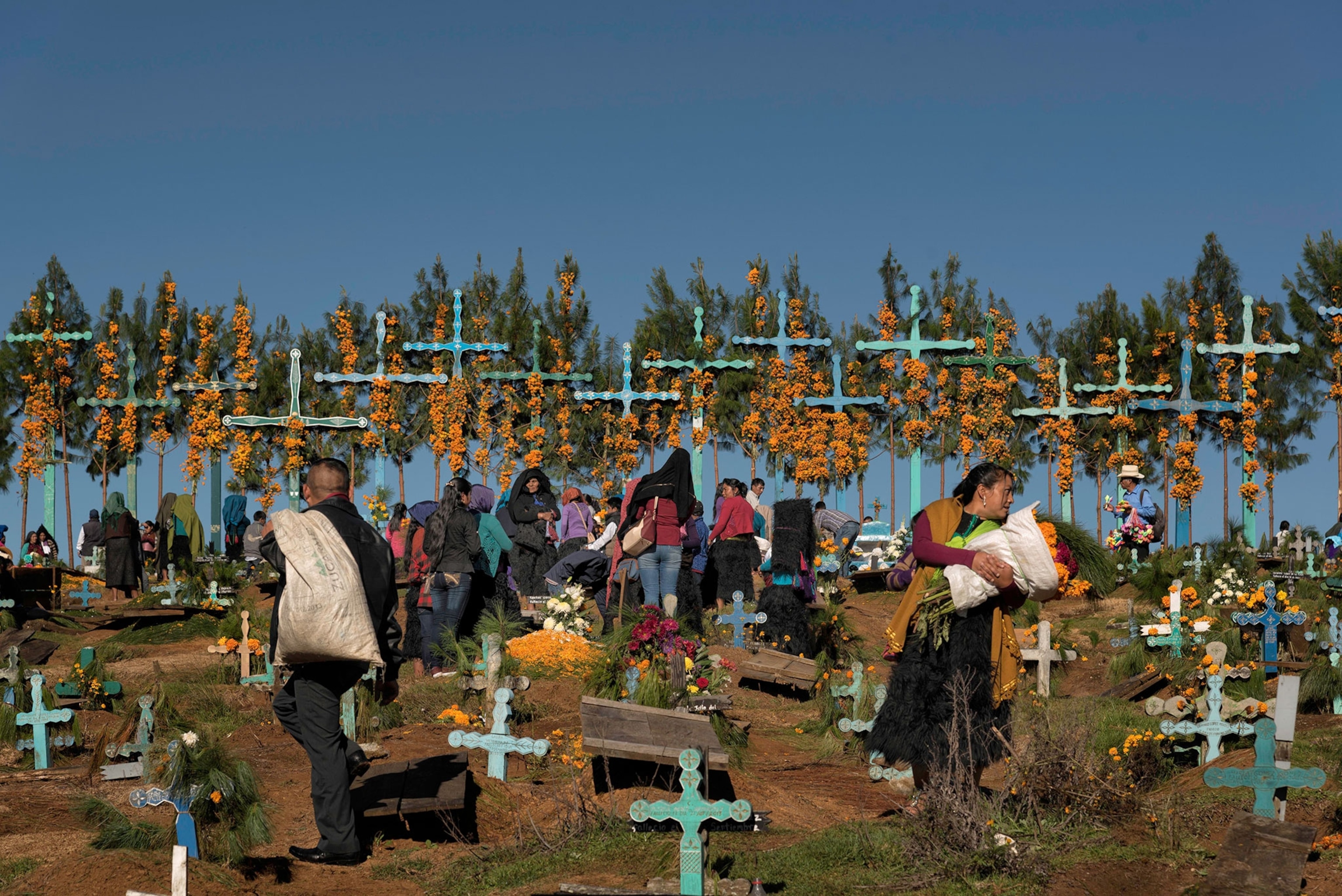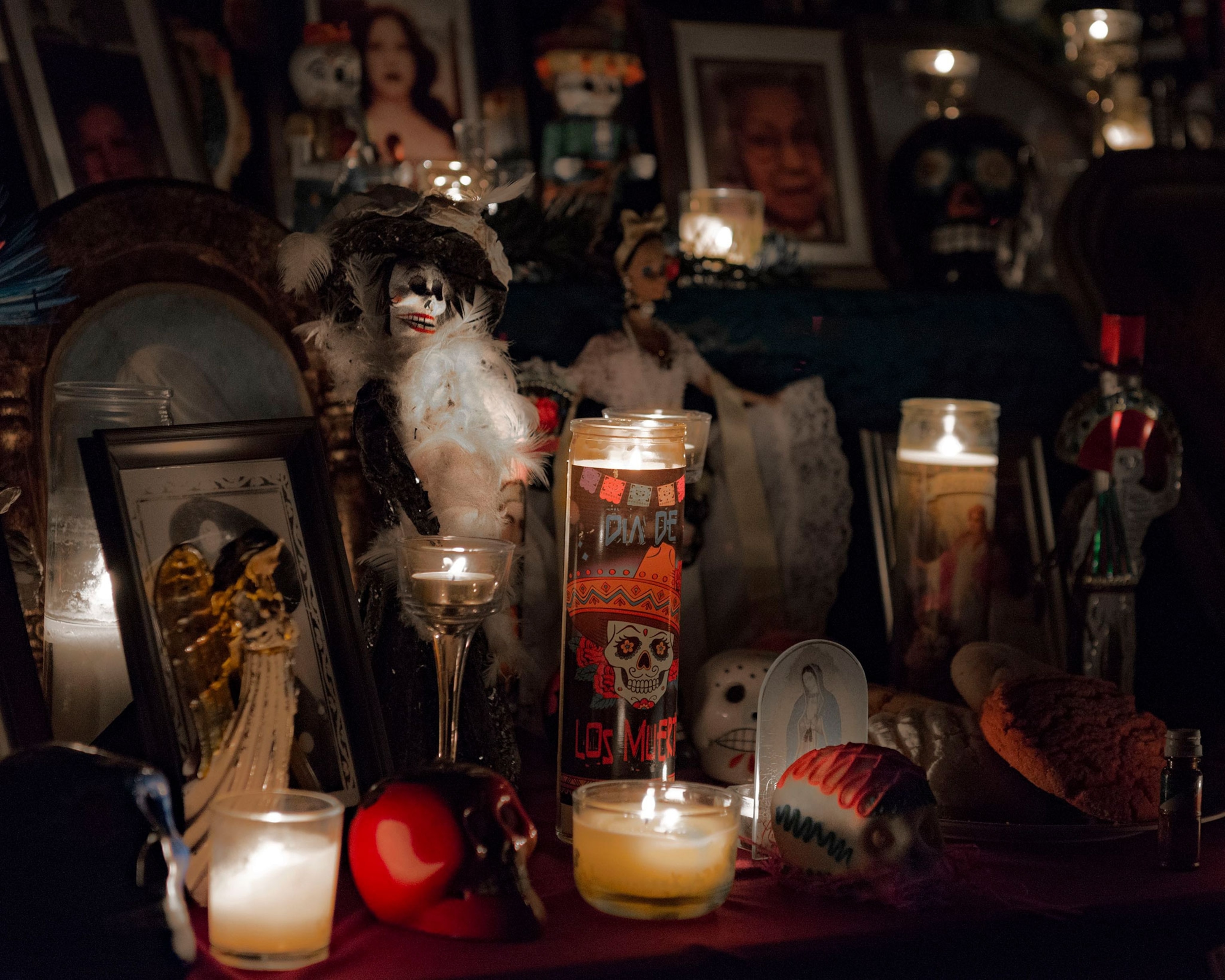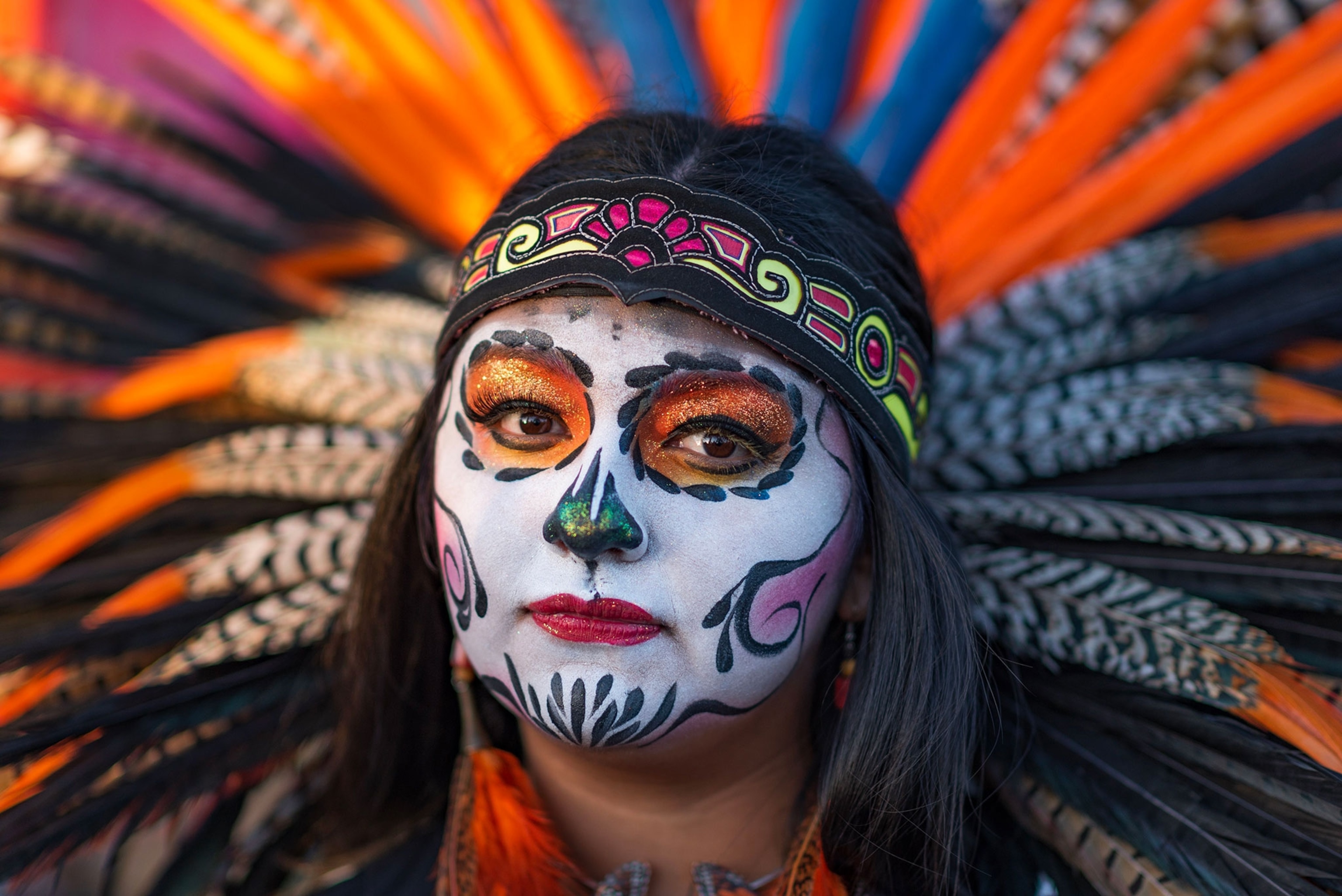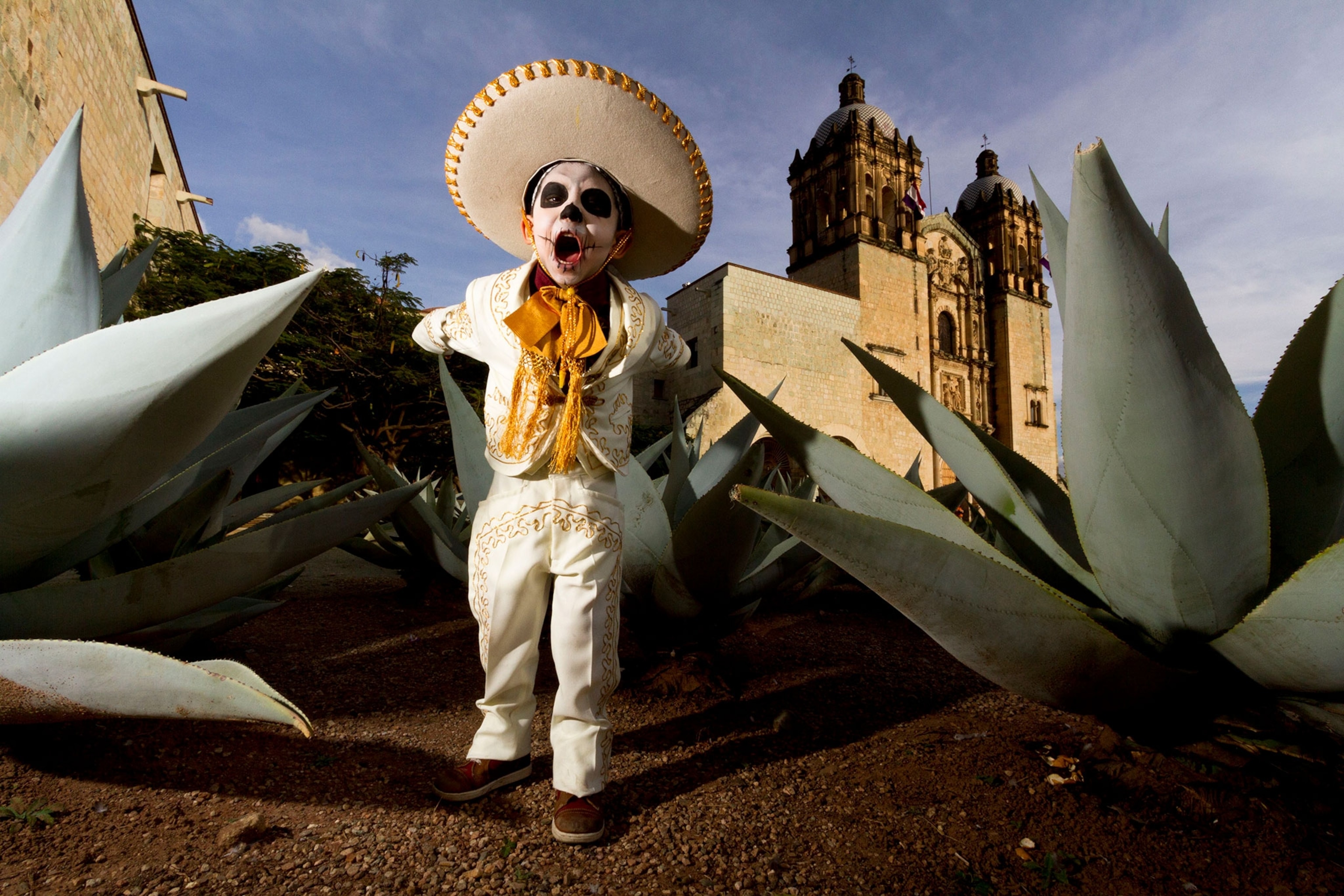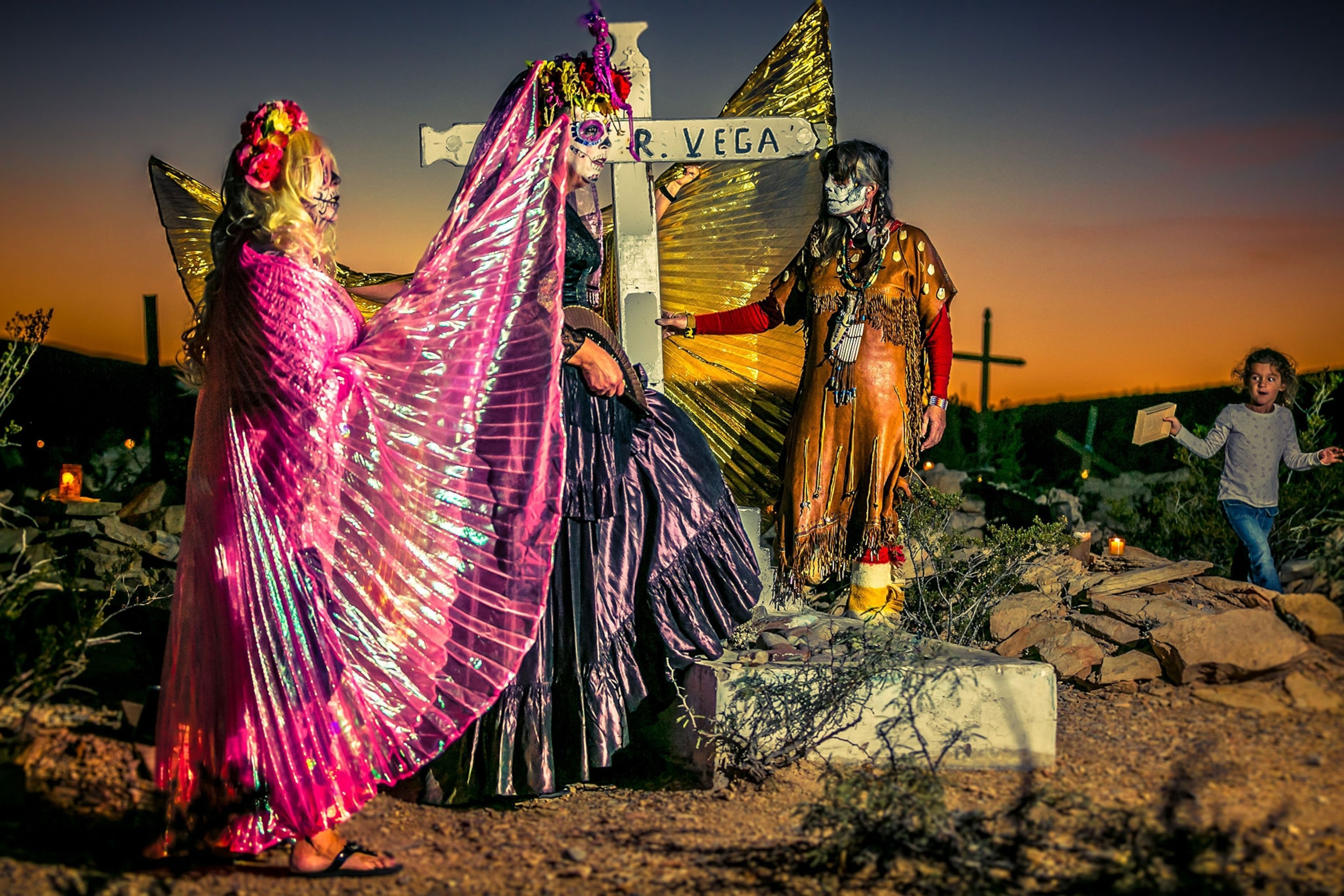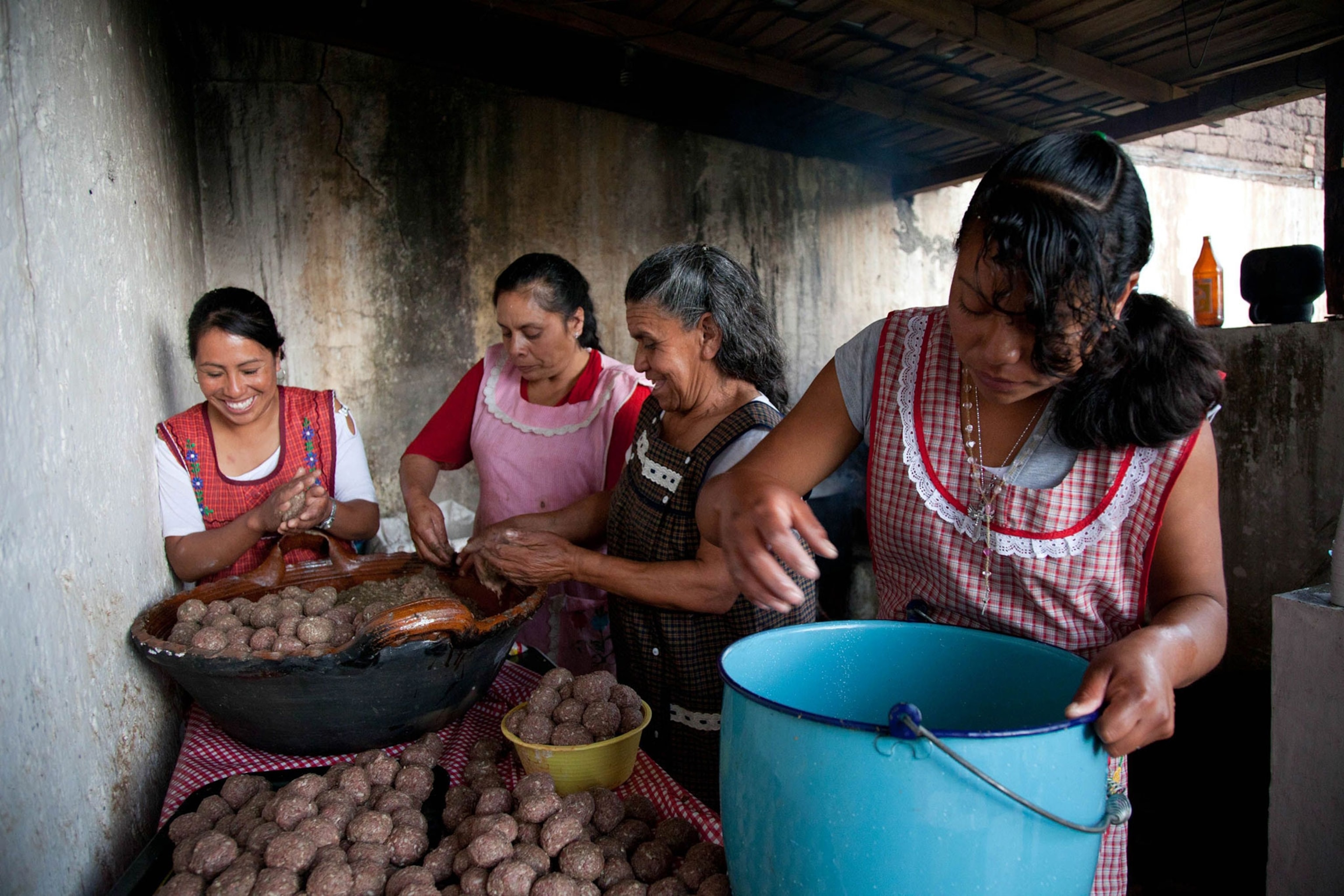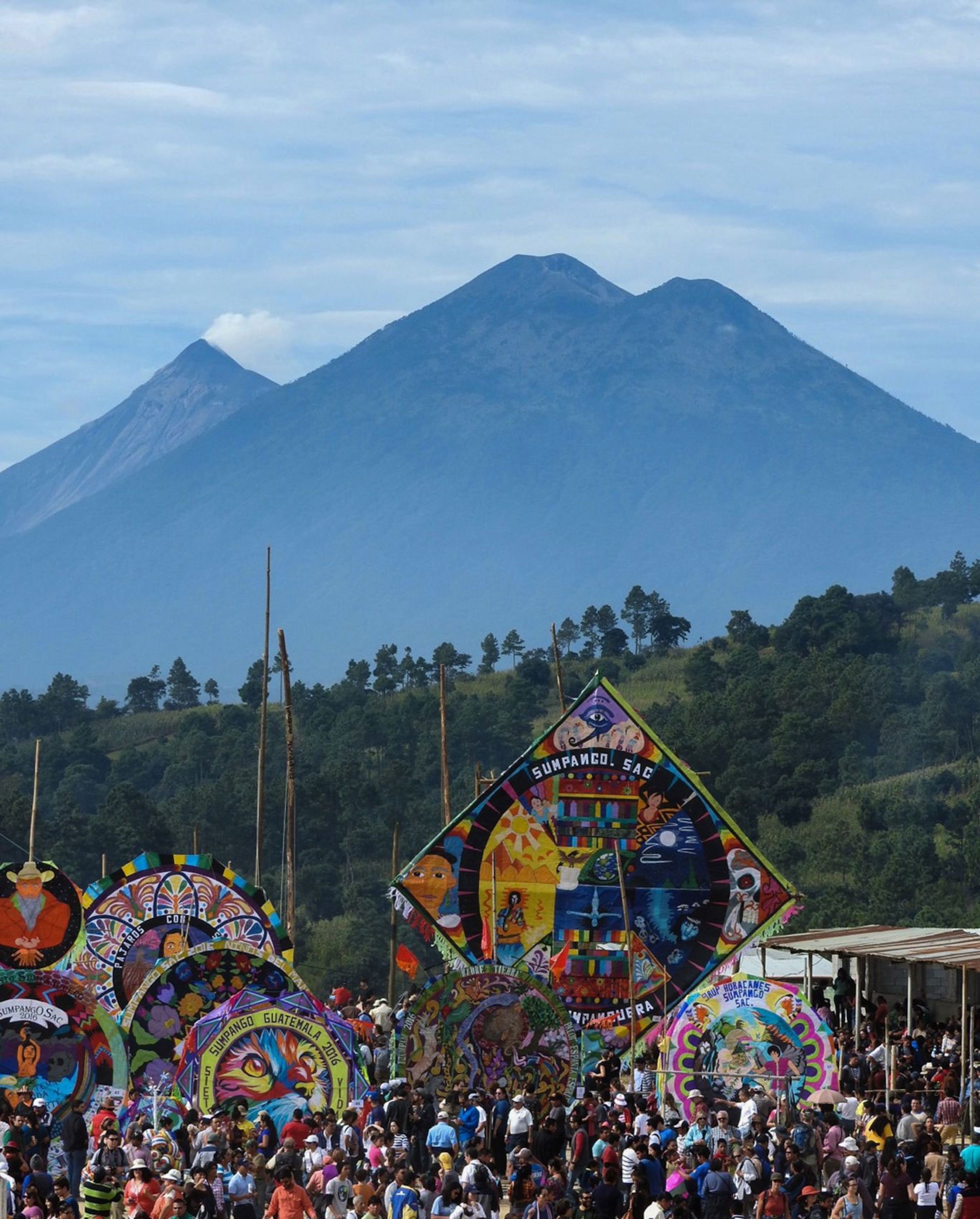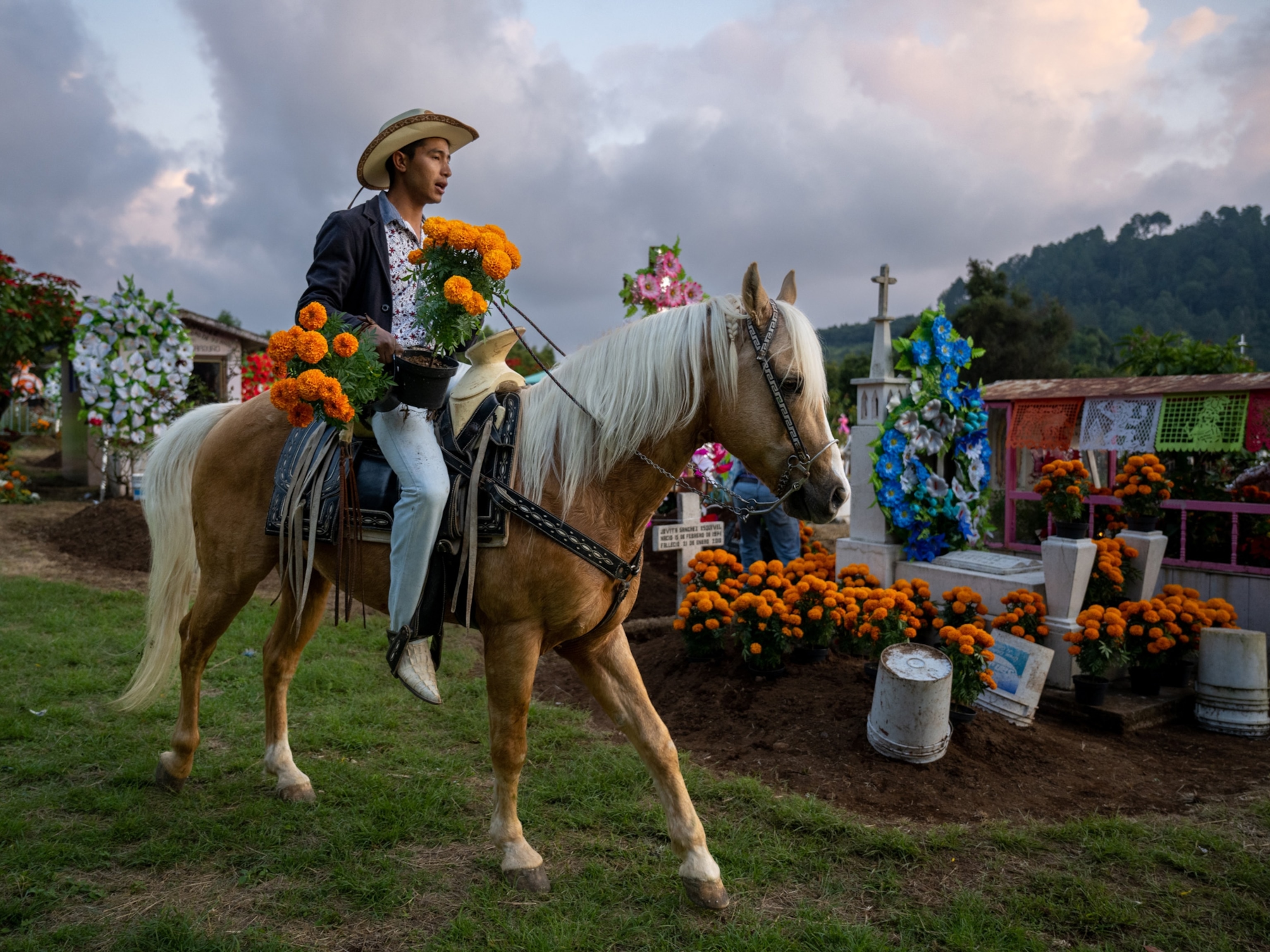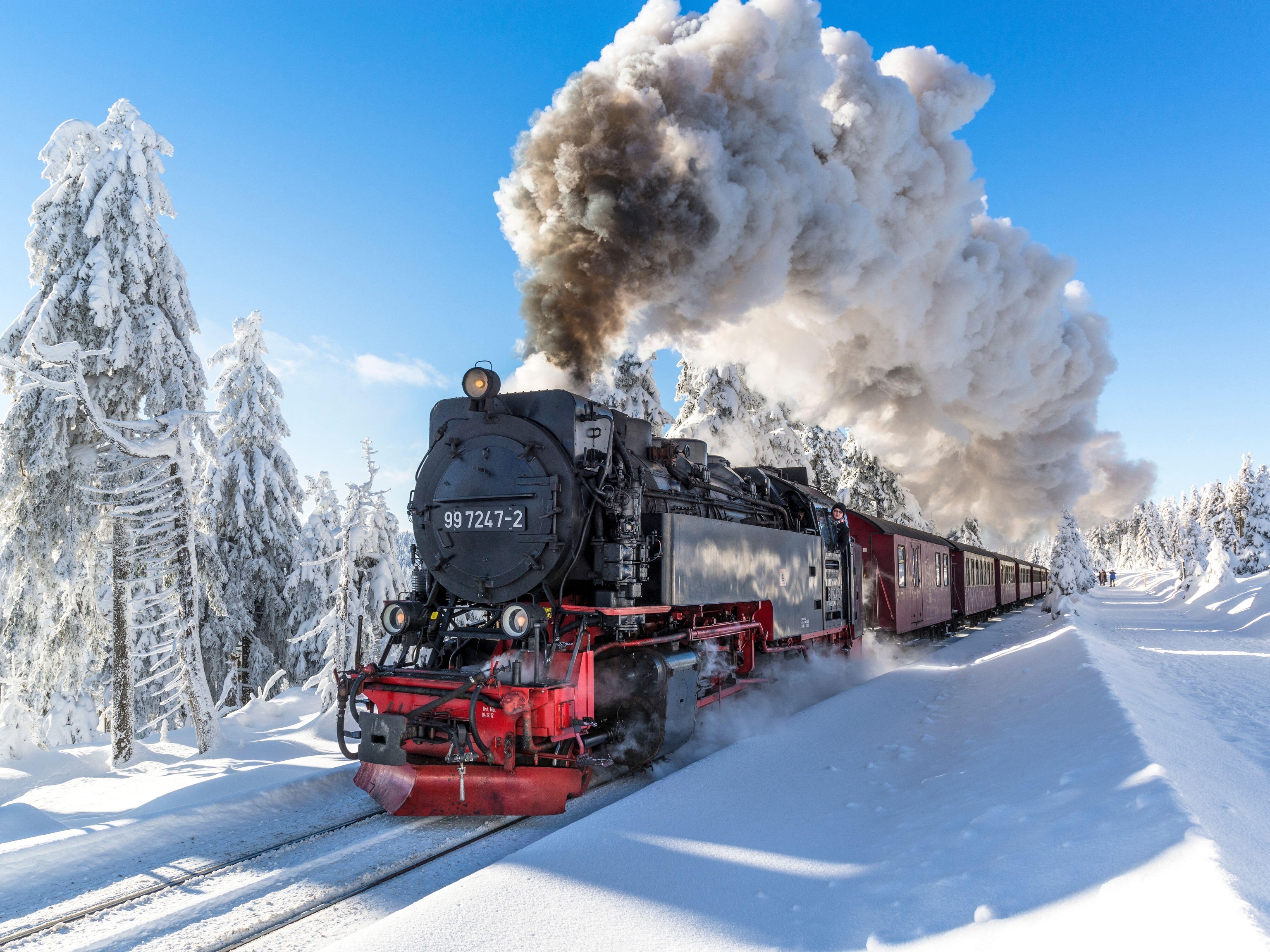See beautiful photos of Day of the Dead
These vibrant Día de los Muertos traditions honor the dead and remind the living of our fragility.
Día de los Muertos, or Day of the Dead, typically begins on All Saints Day, the first day of November. While most festivities combine indigenous and Catholic traditions, the Mexican holiday predates Catholic influence, originating from ancient Aztec festivals that venerated gods like Mictēcacihuātl, the powerful lady of the dead. Today there are as many places to celebrate as there are interpretations of the festival’s “new” signature lady, the feather-boa skeleton, La Catrina, originally painted by José Guadalupe Posada and reimagined by Mexican artist Diego Rivera in his 1947 mural “Dream of a Sunday Afternoon in Alameda Park.”
While every place incorporates different traditions (spicy rum in Haiti, baby-shaped bread in Ecuador) all festivities have one thing in common—a joyful and rich celebration of those dearly departed. This is a time for sharing funny stories about those who have passed, for eating your great-great-grandma’s favorite soup, for cleaning the graves, for dancing in the streets. Markets across Mexico spill over with sugary candy, copal incense, pricked paper banners, and mountains of bread. Everywhere, everything is flooded with marigolds.
If there is one festival motif it would be calacas and calaveras, skeletons and skulls. Children in skeleton face-paint chew sugary skull candy. Bone-shaped bread and skull maracas balance on tables between stacks of tiny ceramic skulls. Skull-shaped balloons are paraded through town behind costumed skeletons who dance their skeleton marionettes. Even the poems written for the festival are called calaveras, satirical little verses that joke to remind us that everyone, rich or poor, famous or unknown, is headed to the same fate—back to the soil, to bone, to ash.
- National Geographic Expeditions







